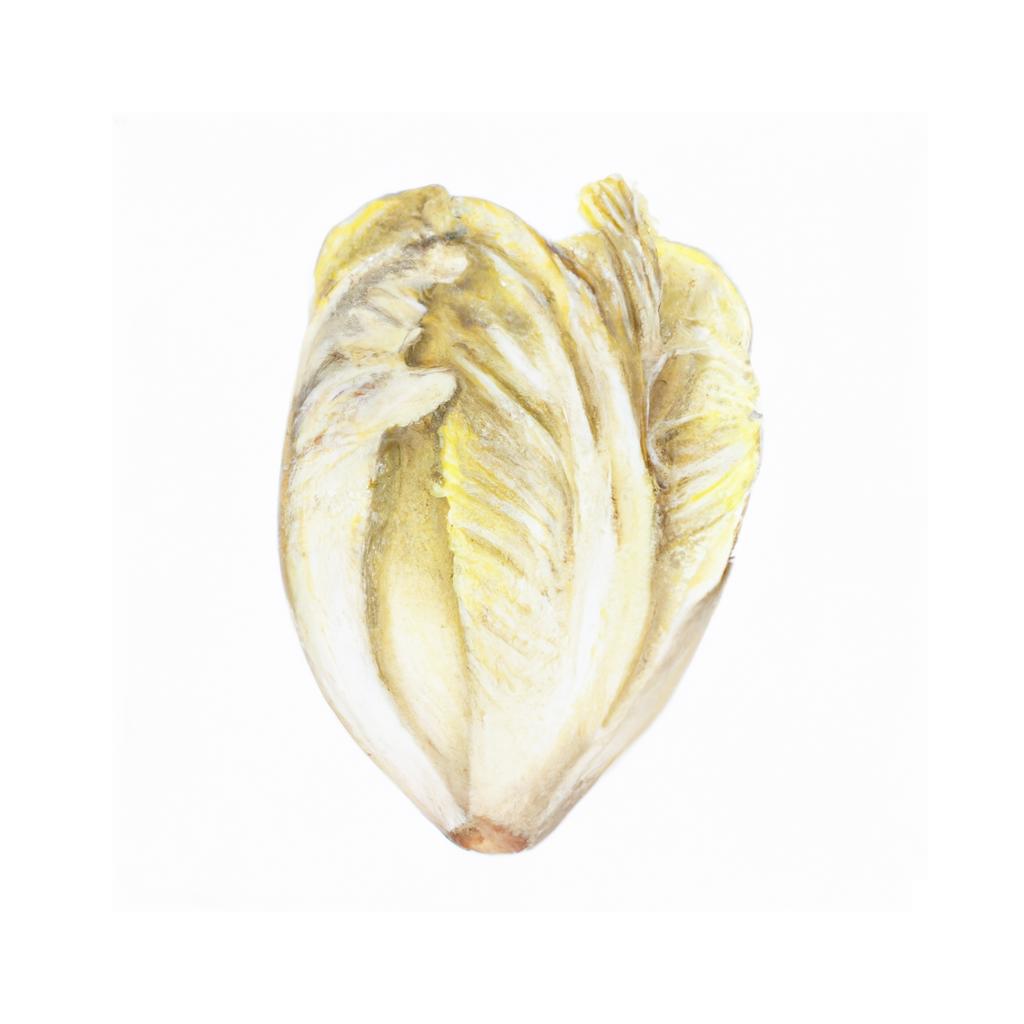
Endive, also known as Cichorium endivia, is a leafy vegetable belonging to the daisy family, Asteraceae. There are two main varieties of endive – Curly endive, featuring narrow, curly leaves and a slightly bitter taste, and Escarole or Broad-leaved endive, with broad, flat leaves and a milder flavor. Endive is popular in Europe, particularly in France, Belgium, and the Netherlands, where it has been cultivated since the 16th century.
Endive thrives in cool weather, making it a great fall or early spring crop. It has a relatively low nutrient requirement and can be grown in a wide range of soil types. The cultivation process typically involves blanching the inner leaves, which produces a characteristic white, tender heart of the plant. The technique for blanching may vary, but generally, it involves covering the plant to deprive it of light, hence inhibiting chlorophyll production.
Nutritionally, endive is packed with essential vitamins and minerals, including vitamins A, C, E, K, and B-complex, as well as minerals like calcium, iron, potassium, and magnesium. It is also a good source of dietary fiber and low in calories, making it an ideal addition to weight loss diets and promoting digestive health.
Endive can be enjoyed both raw and cooked. In salads, it pairs well with other greens, fruits, nuts, and cheeses, adding a delightful crunch and a slightly bitter contrast. You can balance its bitterness by combining it with sweet ingredients like apples or pears, or you can emphasize its flavors with a tangy vinaigrette. Endive can also be used as an edible scoop for appetizers or stuffed with various fillings. When cooked, endive can be sautéed, braised, or grilled, and often appears in soups, stews, and pasta dishes. One of its traditional preparations is the French dish 'endives au gratin,' where endives are wrapped in ham slices, covered with béchamel sauce and cheese, and then baked.
This is advice is most applicable to growers in the UK, you may need to adjust the timings if you live somewhere with a different climate and/or seasons.
| Month | Tasks | Advice |
|---|---|---|
| January | - | - |
| February | Sow endive seeds indoors, | Sow endive seeds in seed trays or pots filled with good-quality seed compost. Place them in a warm, sunny spot to germinate. |
| March | Sow endive seeds indoors, Transplant seedlings to larger pots if necessary, | Continue sowing endive seeds indoors and transplant any seedlings that have outgrown their pots into larger containers. |
| April | Begin hardening off seedlings, Sow endive seeds outdoors, | Start hardening off indoor-grown endive seedlings by gradually exposing them to outdoor conditions. Begin sowing seeds directly in the garden in well-fertilized soil. |
| May | Plant out hardened-off endive seedlings, Sow endive seeds outdoors, | Transplant hardened-off endive seedlings into the garden in a sunny spot with well-draining soil. Continue sowing seeds outdoors for a continuous harvest. |
| June | Harvest endive leaves as needed, Sow endive seeds outdoors, | Harvest endive leaves as they mature, being careful not to remove too many from each plant. Continue sowing seeds for a continuous harvest through the summer. |
| July | Harvest endive leaves as needed, Sow endive seeds outdoors, | Continue harvesting endive leaves and sowing seeds to ensure a continuous supply of fresh endive throughout the summer months. |
| August | Harvest endive leaves as needed, Sow endive seeds outdoors, | Enjoy your endive harvest and continue sowing seeds to extend the growing season into autumn. |
| September | Harvest endive leaves as needed, Sow endive seeds outdoors for overwintering, | Continue harvesting endive leaves and sow seeds for overwintering plants that will provide fresh endive throughout the winter months. |
| October | Harvest endive leaves as needed, | Keep harvesting endive leaves until frost damages the plants, and protect overwintering plants with a cloche or cold frame. |
| November | - | - |
| December | - | - |